The last eight months near Evans Station have found both of the block-long developments begin leasing, with residents moving in. As we mentioned in our first look at the Evans Station area, the Washington Park view plane caps development at 110 feet, which constrains the proposed and under-construction housing to, functionally, less than 8 stories. But it’s not simply new housing being planned or constructed in the neighborhood; in an effort to connect the Overland neighborhood with the South Broadway commercial corridor, the city asked for bond money to construct a pedestrian and bike bridge across Santa Fe Drive along the Jewell alignment. The contract was awarded in May, and in June, then-Councilman Jolon Clark tweeted that the project would begin construction during the fall of 2024. (We’ll believe the date when we see shovels in the ground.) Nevertheless, new connectivity will no doubt catalyze more development on both sides of Santa Fe Drive in time.
Last Roundup: Evans Station Roundup February 2023
COMPLETED
Since we last visited the neighborhood, proposals for new development have slowed considerably, though re- zonings for new development continue to pass City Council. This post will not cover the constant churn of duplex, triplex, and townhouse buildings southwest of Evans Avenue and Broadway. For that kind of coverage, check here.
Hanover Evans Station. This question-mark-shaped structure partially wraps a huge parking garage, which remains, unfortunately, visible from Bannock Street. The exterior has not significantly changed from Denver Infill’s last visit, but the interior is complete, and residents have moved on in. While taking photos of the completed building, I noticed they advertised tours. The leasing agent apologized that she was all booked on tours that day but described a building with high-end finishes, co-working spaces, a screening room, two gyms, a pool… in brochure-speak, “hotel-like amenities.” The list of amenities available just a train ride away from swanky towers in Union Station suggests that this new development seeks the same clientele.
| Project Description | Developer | Architect | Contractor |
|---|---|---|---|
| 5 stories | 278 apt homes | 344 (v) 211 (b) parking | Hanover Company | W Partnership | Hanover Construction |
Alexan Evans Station. Finishing touches were underway on the building at the time of photo taking, which is now leasing. Some of the first tenants are in the space; an F45 Training gym has taken up space in the first-floor retail along Broadway, and the sidewalk around the block is fully open to pedestrians. With this development done, there are three fewer curb cuts along Broadway than there were three years back. Yet, it’s hard to communicate just how massive this new building is: including parking, this building totals more than half a million square feet of developed space, claiming an entire city block in South Denver. If you allow the observation, with all that frontage, the building’s contribution to the urban fabric seems a little selfish. Turning inward, you can see the building’s donut holes in Google Maps, where outdoor amenity spaces plug the top of the parking structure. In a narrower structure, resident amenities typically come as third- or fifth-floor decks overlooking the street, which at least adds “eyes on the street,” maybe someone’s pool-party music, a sense of liveliness. But then, at Denver Infill, we understand that there will always be background buildings, “vanilla” buildings. The need for more homes and less surface parking in Denver means that we sometimes get a building like this. More exciting then, to think of the new neighbors, and that these neighbors will bring business to the entire Broadway and Evans commercial corridors, and they’ll live just three blocks from the rail station, and how a building like this reduces the pressure on exurban sprawl by bringing so many homes so close to central Denver.
| Project Description | Developer | Architect | Contractor |
|---|---|---|---|
| 5 stories | 367 apt homes | 397 (v) 240 (b) parking | Trammell Crow Residential |
JHP Architecture | Maple Multifamily |
UNDER CONSTRUCTION
The Oso. Much vertical progress has occurred on-site since we last visited, in fact, the building has now topped out. (Which warranted a return for new photos.) Though not the largest building in the neighborhood by square footage, the building is big in a different way. The Oso adds commercial space just off Broadway, luring passersby into this new, dense neighborhood. Those standing at Jewell and Acoma gain a fascinating window into the neighborhood’s future and recent past. Looking west, there will eventually be a bike/pedestrian connection across Santa Fe Drive; the street is lined with new construction, apartments, and actual sidewalks. Looking east, there is a new and used tire shop; the block between Acoma and Broadway has no sidewalk and is used as free car storage at the moment.
| Project Description | Developer | Architect | Contractor |
|---|---|---|---|
| 9/5 Stories | 267 apt homes | 6,900 sf retail | 244 (v) 152 (b) parking | Palisade Partners | Craine Architects | Milender White |
Urban Peak Mothership. A smaller project, slightly little outside the station area as we’d previously covered it, this development adds shelter beds and longer-term transitional housing for homeless youth and young adults to Acoma Street between Iowa and Mexico Avenues. This upgrades a previous Urban Peak facility at the same address, too small and under-resourced for their organization, and the neighborhood will be undoubtedly be better for the addition.
| Project Description | Developer | Architect | Contractor |
|---|---|---|---|
| 4 Stories | 130 shelter beds | 5,400 sf community center | 10 (v) 109 (b) parking | Urban Peak | ShopWork Architecture | Milender White |
PROPOSED
Russell House (née Gables Evans Station). At the time of photo-taking, the site remains cleared but with no new work. Many projects in Denver have stalled out since national monetary policy tightened in the middle of last year. However, within Denver’s permitting system, there is constant communication between the city and the developers, with a structural engineering plan just approved last week, suggesting this project is still very much alive. Looking at the most recent construction permits, we see an updated rendering of how the building will fill the site, with an interesting shape to ensure the apartments have access to open air, like a lowercase “h.”
| Project Description | Developer | Architect | Contractor |
|---|---|---|---|
| 7 Stories | 283 apt homes | 3,000 sf retail | 309 (v) 167 (b) parking | Downing Street Investments | Davis Partnership | Pinkard |
Jewell Pedestrian Bridge. After visiting the Evans Station area by bike many times over the last year, I am personally excited to see this bridge break ground and allow for pedestrians and cyclists to cross the rails and Santa Fe Drive without being put in front of drivers exiting or entering a highway. The site presents some real difficulties: because of the density of rails and the highway below, only one pier can support the span, and the bridge needs to be much higher at Cherokee than at the golf course. The design presented here is only a concept from a community meeting on the project earlier this year; the project’s website predicts the bridge won’t be complete until 2026. DenverInfill looks forward to seeing the design of this building evolve with the community; it’s going to change for the better.
| Project Description | Developer | Architect | Most Recent Activity |
|---|---|---|---|
| Pedestrian Bridge on Jewell Avenue Alignment | City and County of Denver | TBD | RFQ |
These photos show the conditions for someone crossing from the South Platte River to Broadway right now. Evans is not pleasant. It’s steep, the sidewalk is not in good condition, and there are many slip lanes for cars getting off and on Evans Avenue. As urbanists, we ought to push to transform every street into a pleasant place for walking and cycling, but for the safety and comfort of people in Overland today, it would be preferable to avoid the Evans overpass on foot if there were another option.
The next couple of photographs document the currently proposed alignment of the future bridge along Jewell Avenue. Of note, the city has already spent some money on improving the trail that runs north-south along the western edge of Santa Fe Drive. More is to be spent on improving the experience for pedestrians and cyclists using W Iowa Avenue to go under the rail and S Santa Fe Drive. There is vehicular access to and from southbound Santa Fe Drive along W Jewell; the proposed bridge would bend southwest at the western edge of the Santa Fe Drive ROW, directing cyclists and people in wheelchairs down to Asbury Avenue, which connects to the South Platte River Trail at Pasquinel’s Landing Park. The eastern side of the bridge is more straightforward but needs to be much taller than the western side: RTD requires bridges to have several feet of clearance over their catenary wires, requiring the bridge to begin 30 feet above the ground.
Though multiple buildings have been finished in just the last year, Evans Station still feels a little quiet. The lack of sidewalks through the remaining industrial section is a real challenge for walkability and safety; in good news, sidewalks across Denver will (eventually) be addressed. Once there is better connectivity to Overland, the neighborhood around the station will become a real node of activity in South Denver. But in the meantime, the neighborhood could benefit from some public gathering place, perhaps a small park or neighborhood-serving businesses with a generous contribution to the public realm. However, new residents have a knack for precipitating new investment and opportunity, and it will be exciting to watch this area take off over the next few years. If you are a new resident of the Evans Station area, we would be interested to hear your thoughts.
About the author:
Andy Cushen is a car-free urbanist living and working in Denver; his reporting and analysis of the construction boom in Denver neighborhoods can be found under the handle @BuildupDenver on X (formerly known as Twitter). Andy joins the DenverInfill team to help cover neighborhoods north and west of I-25 (such as the Highlands, Sun Valley, and West Colfax) and RTD rail stops with significant developments nearby.


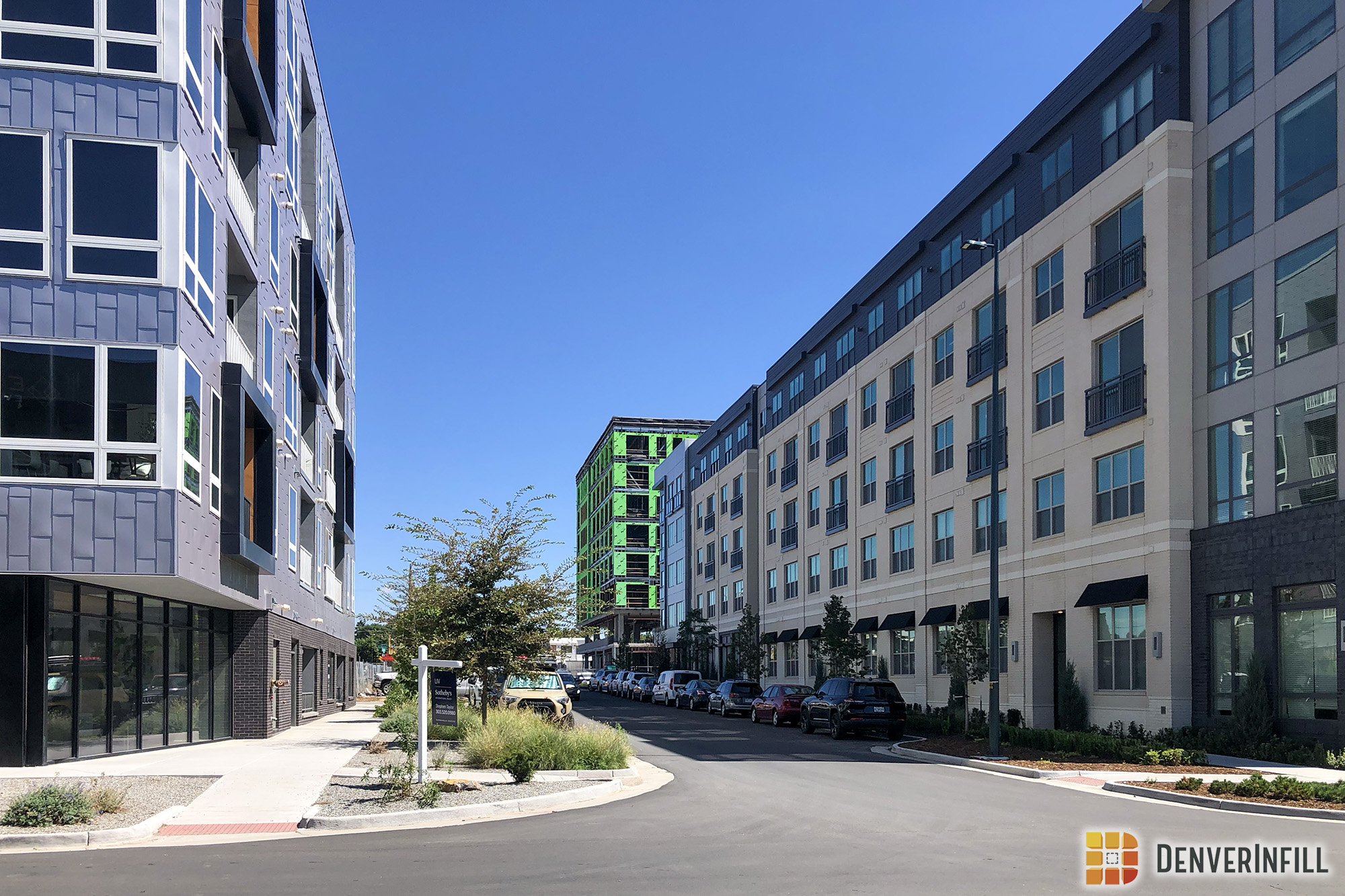


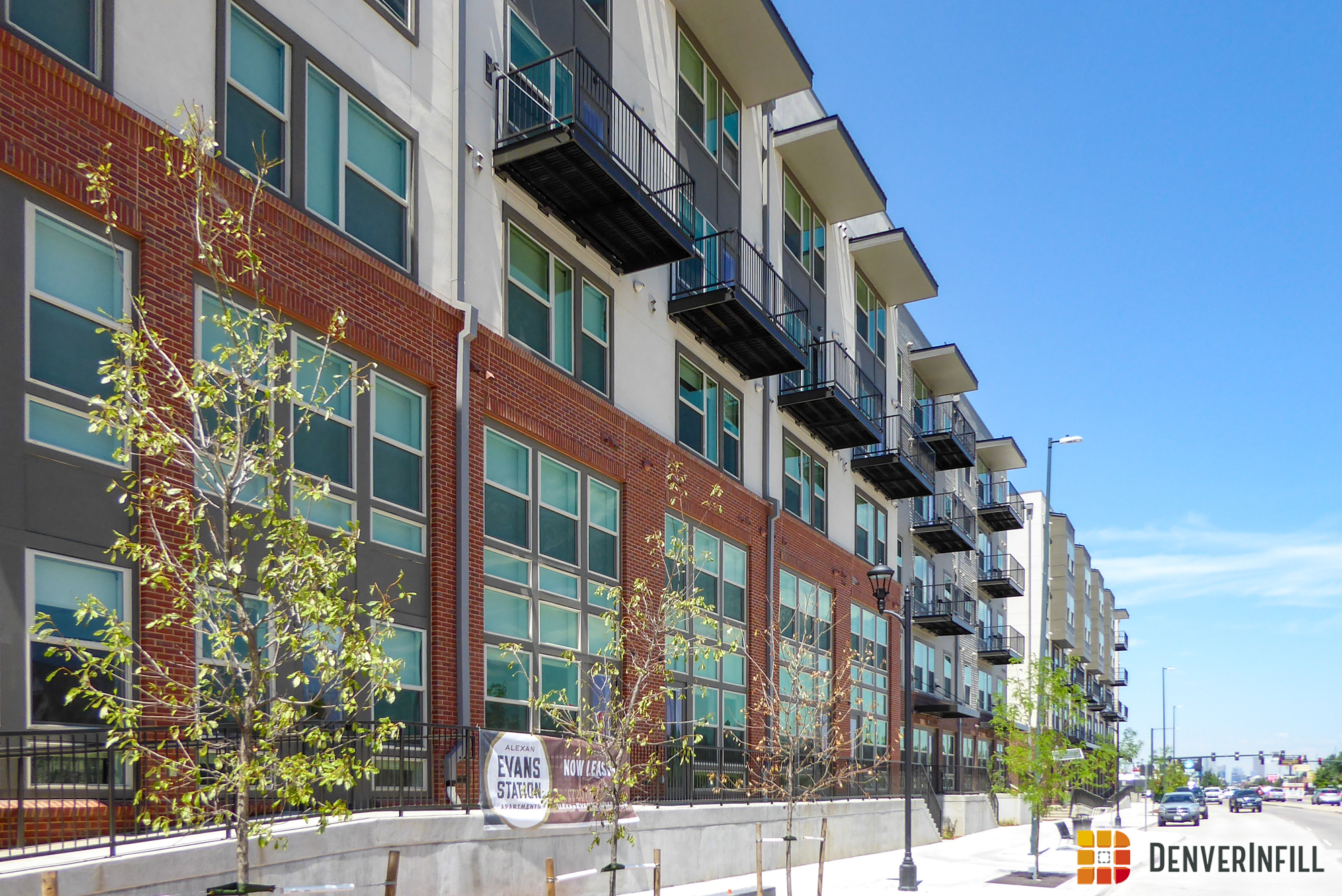

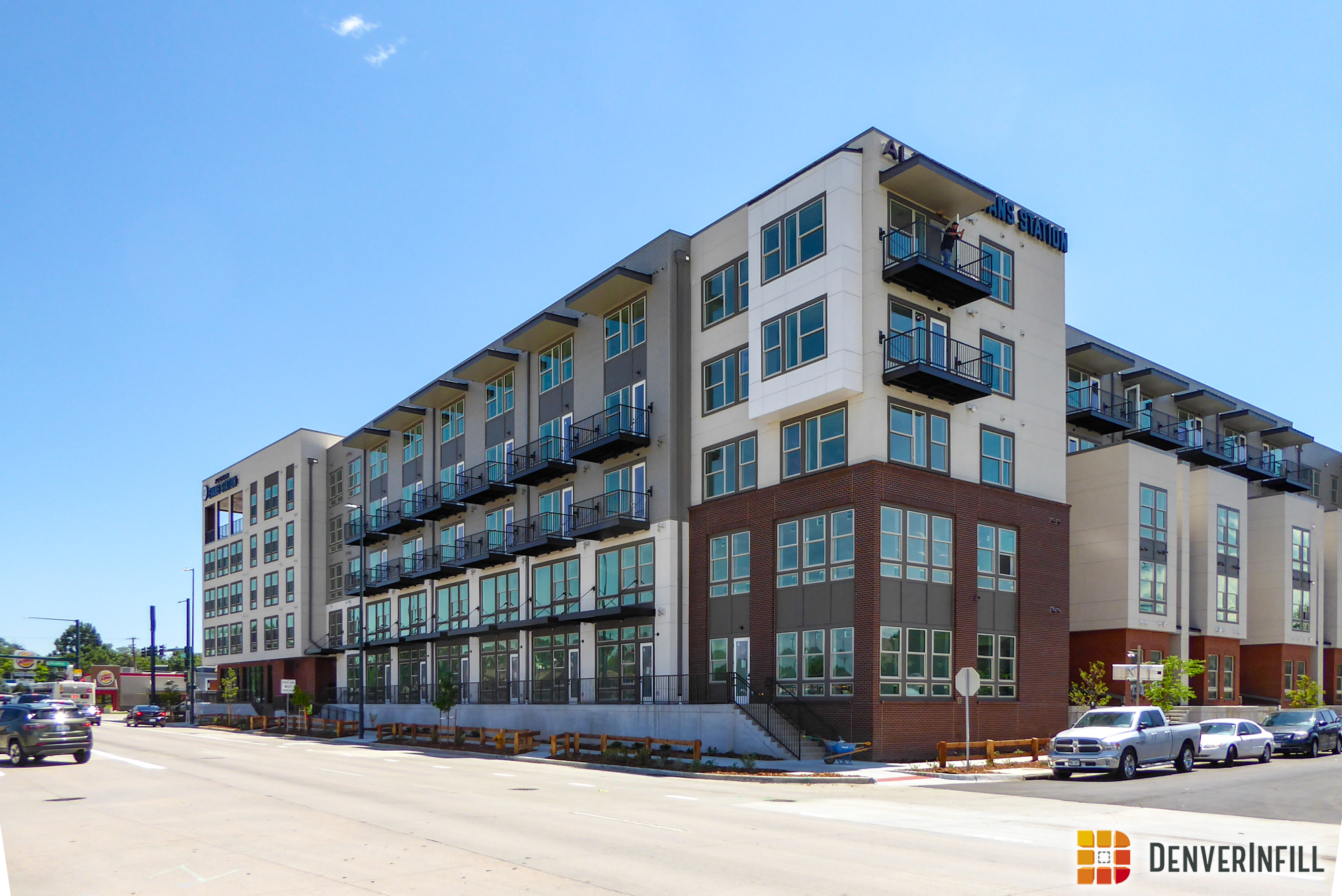

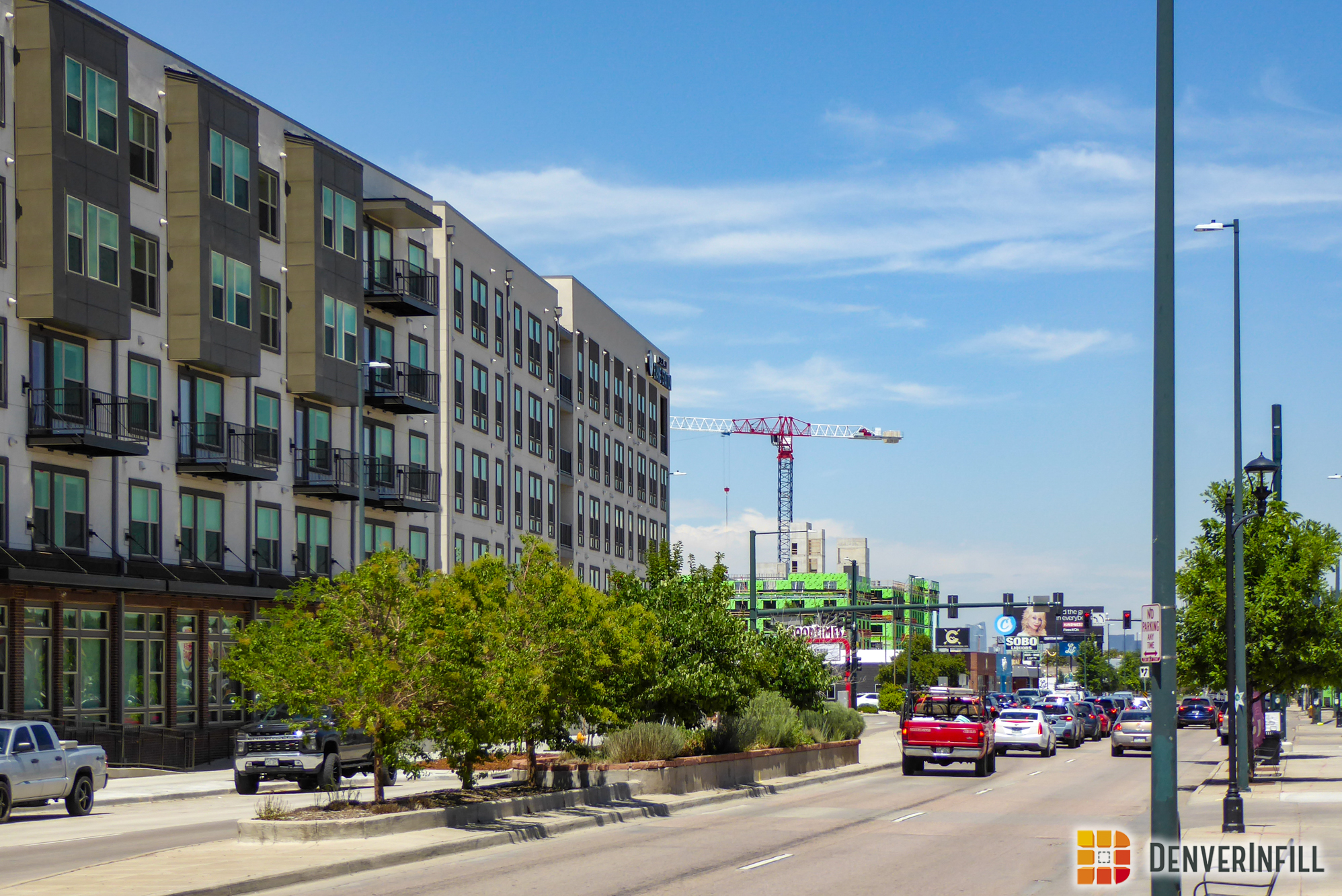




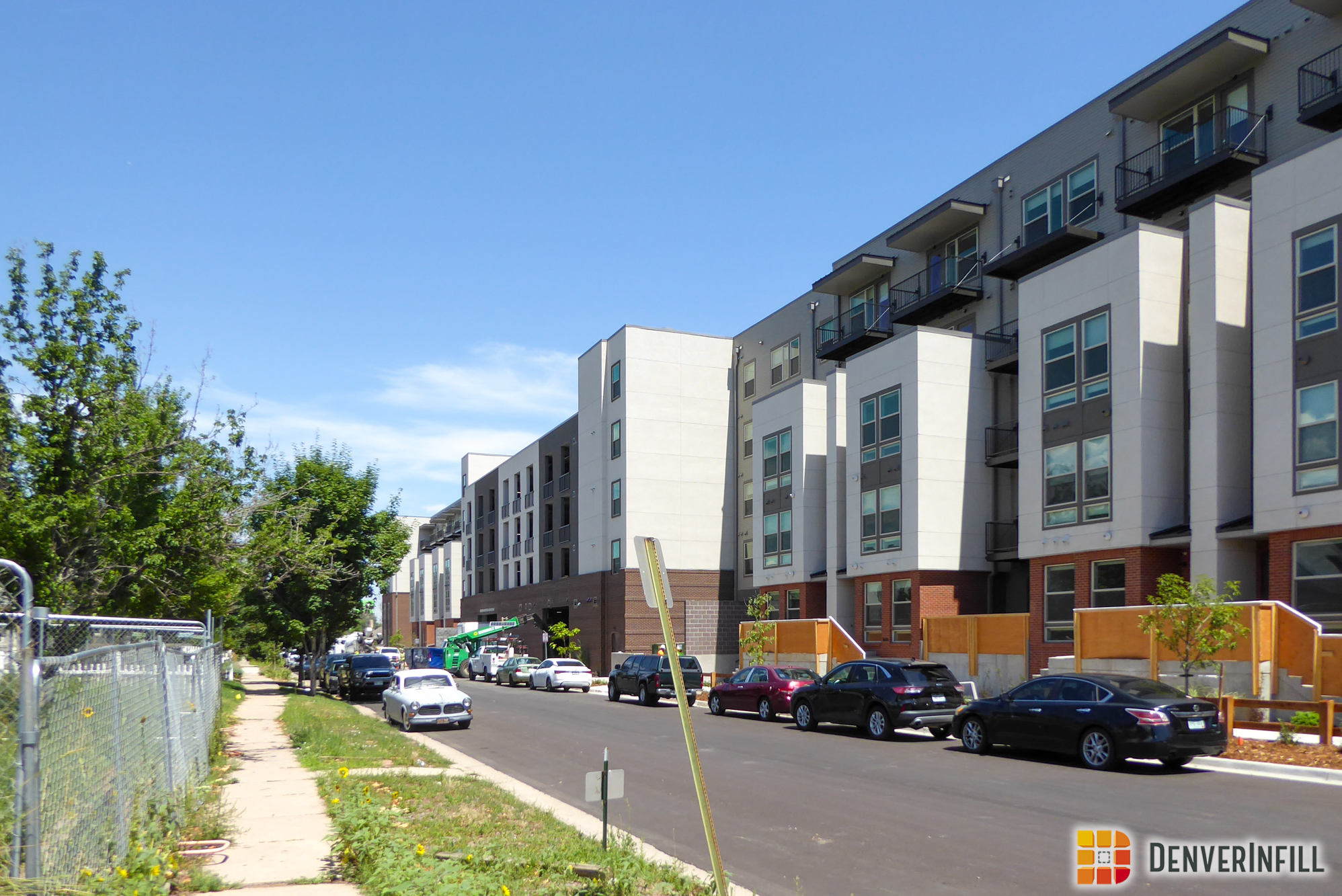

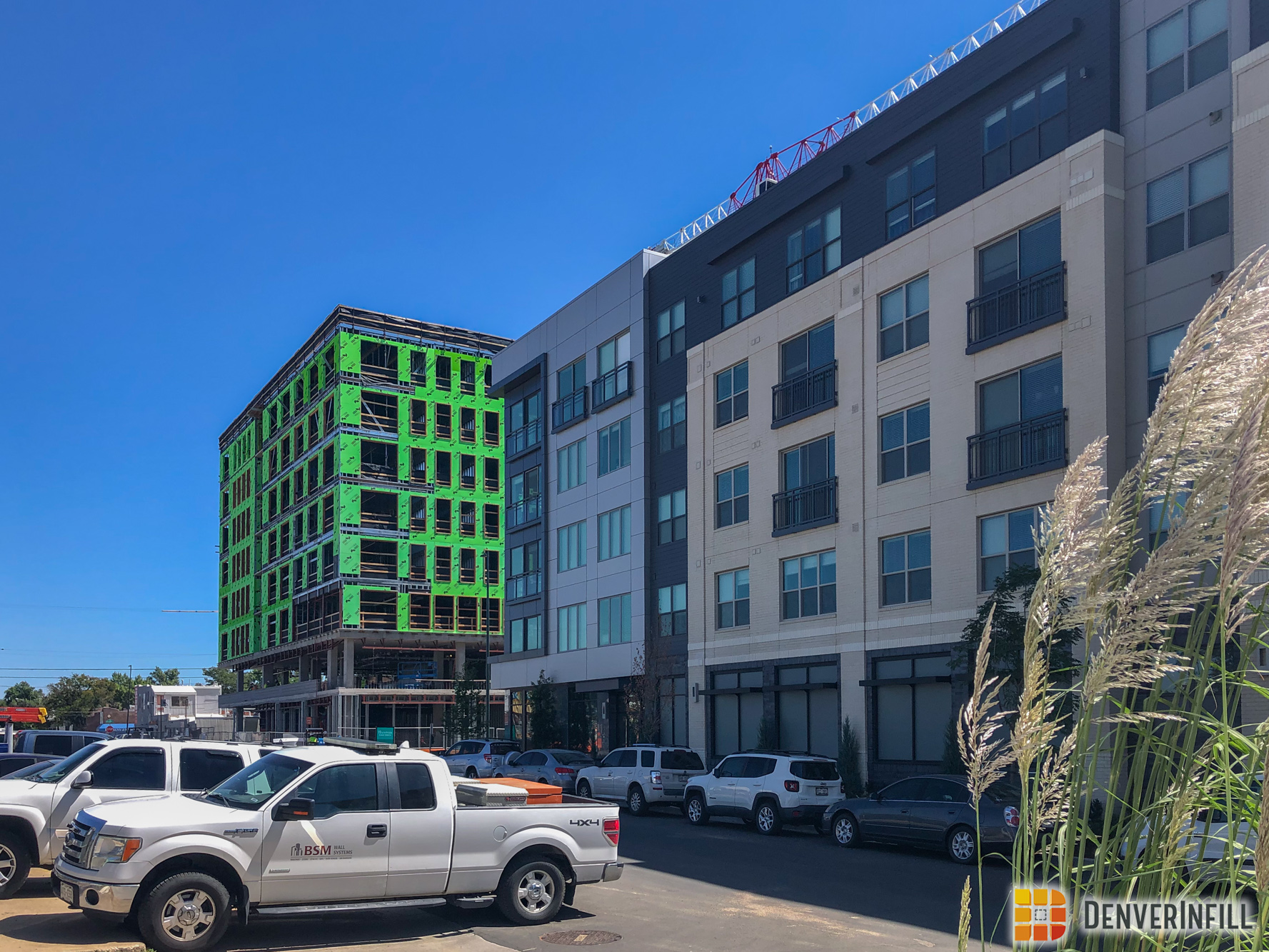

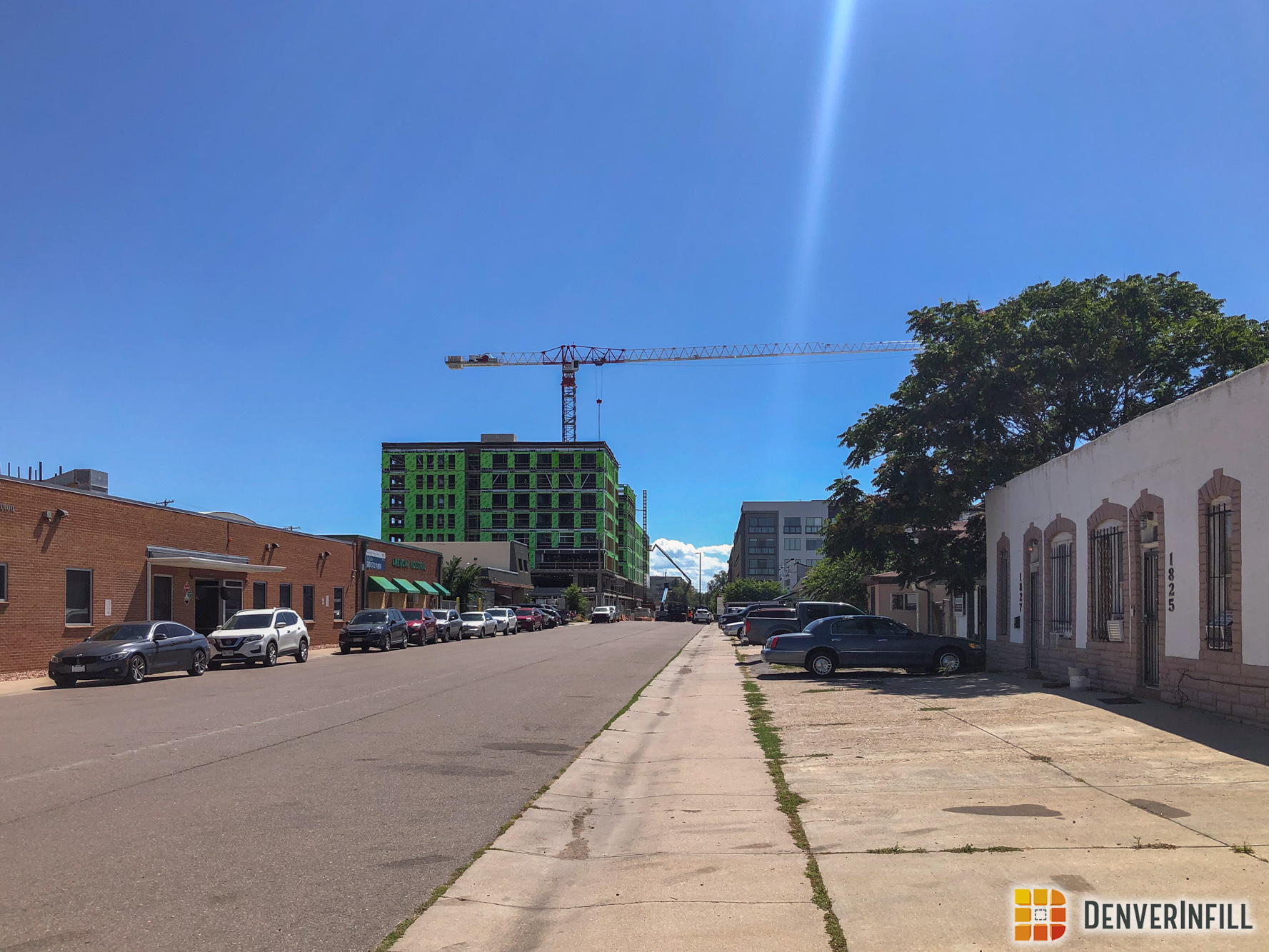
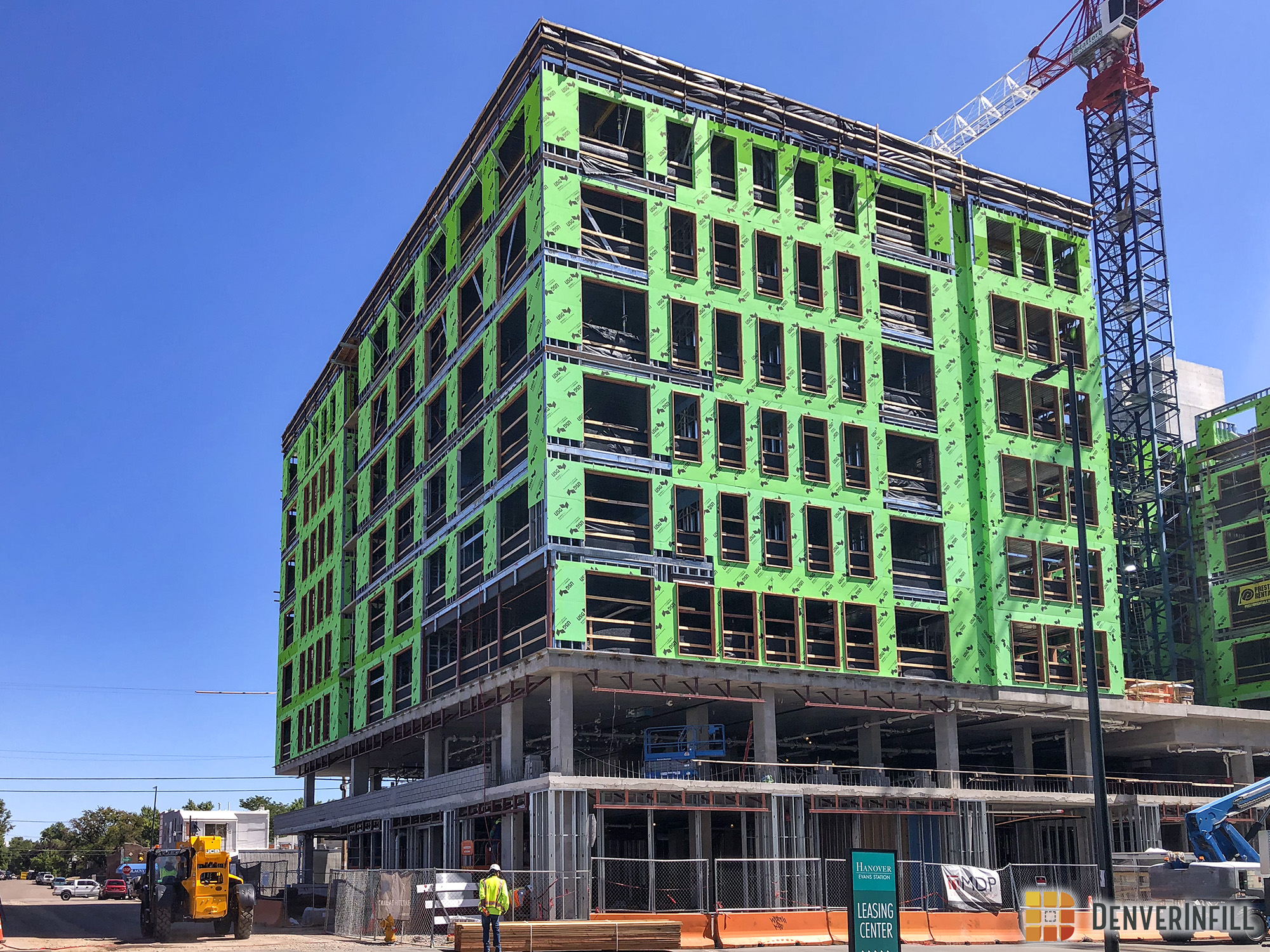
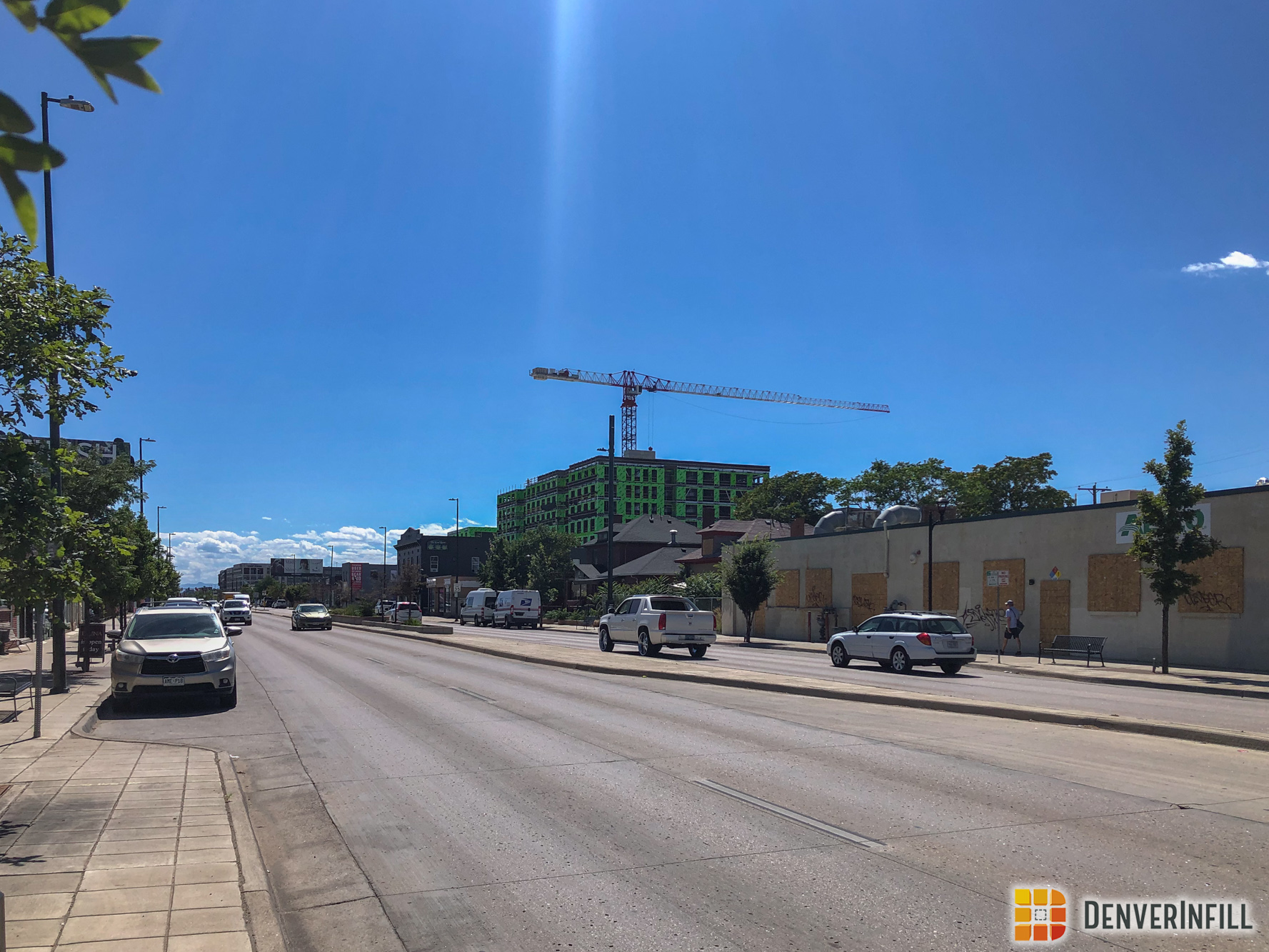


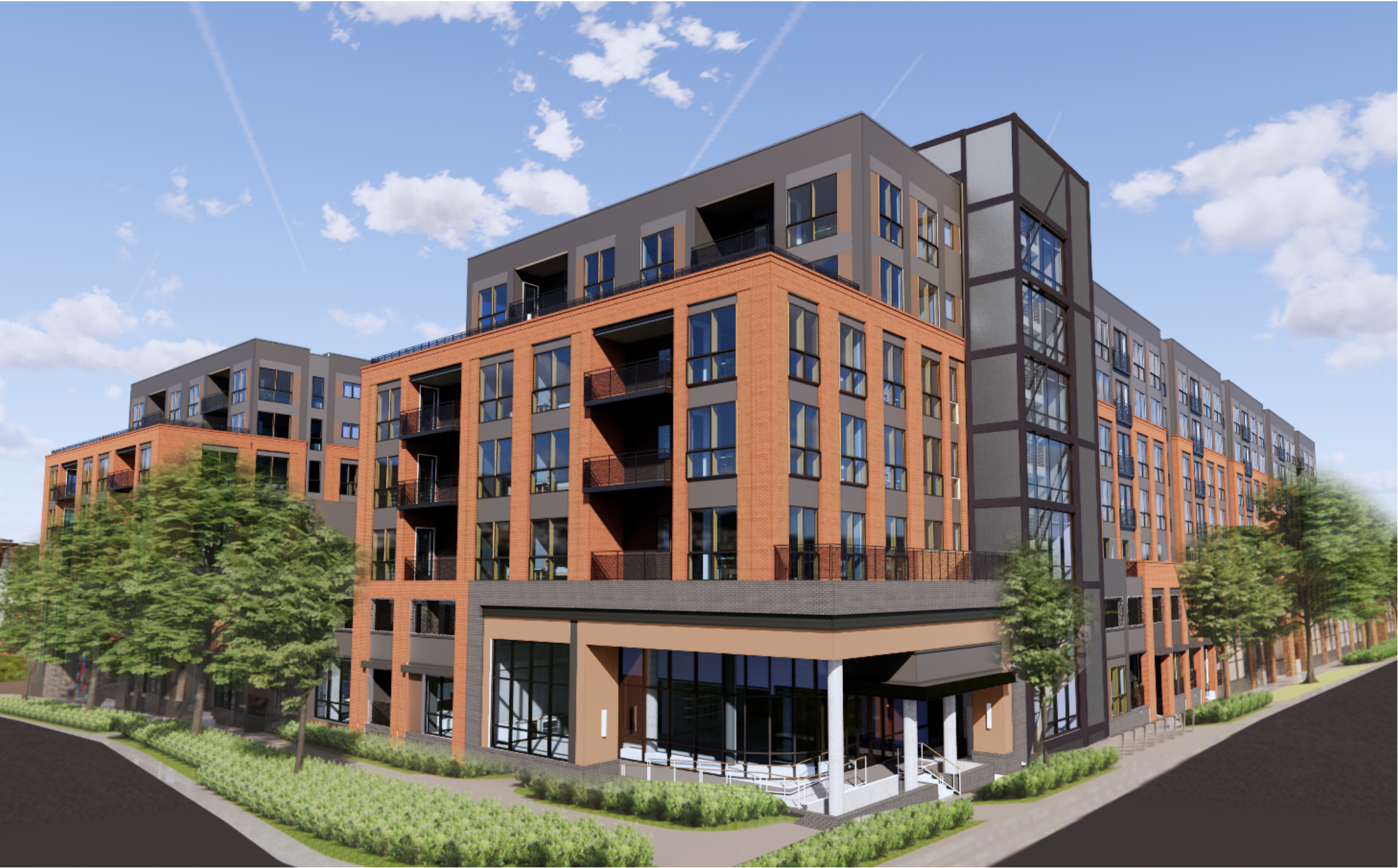
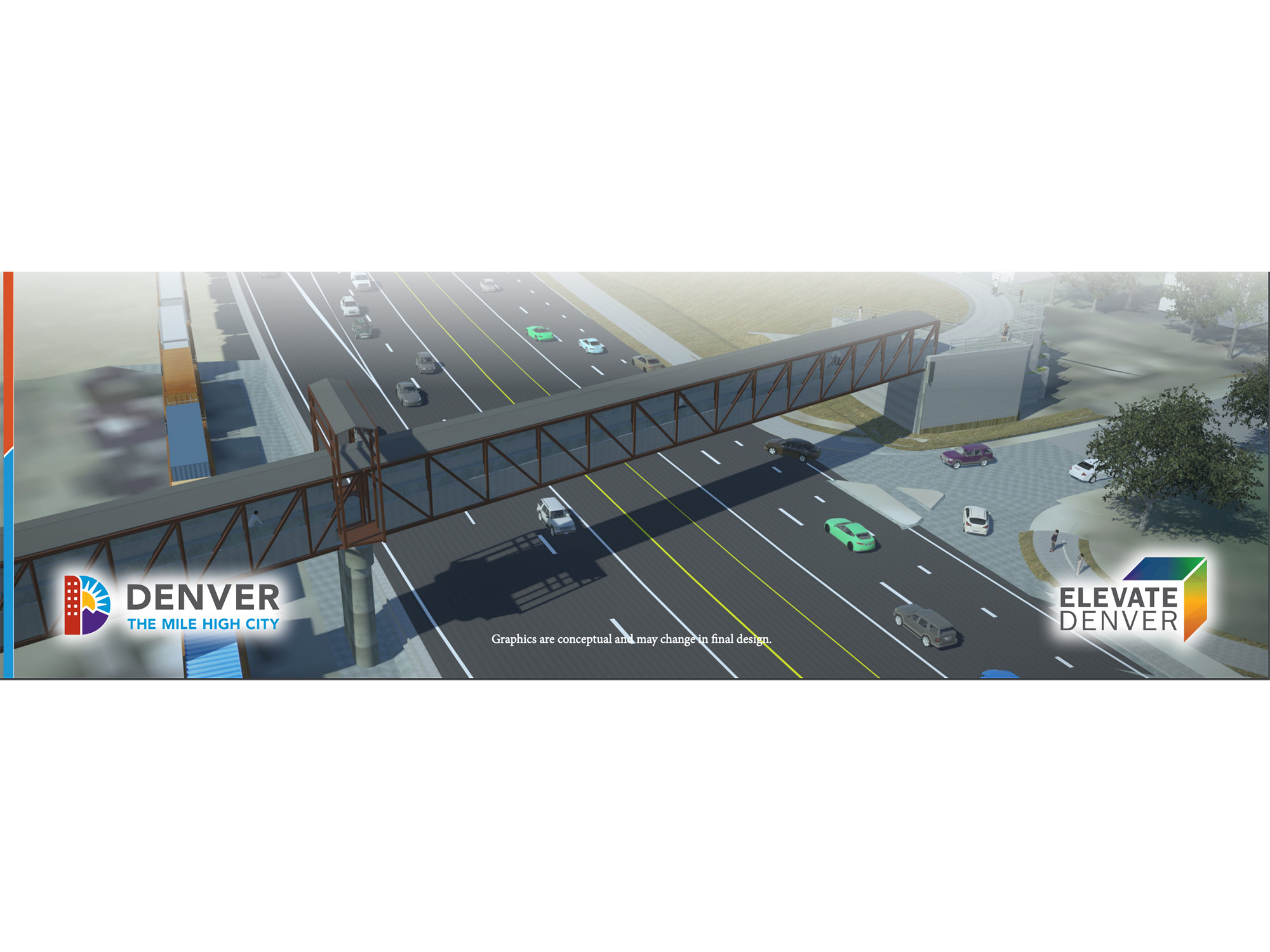
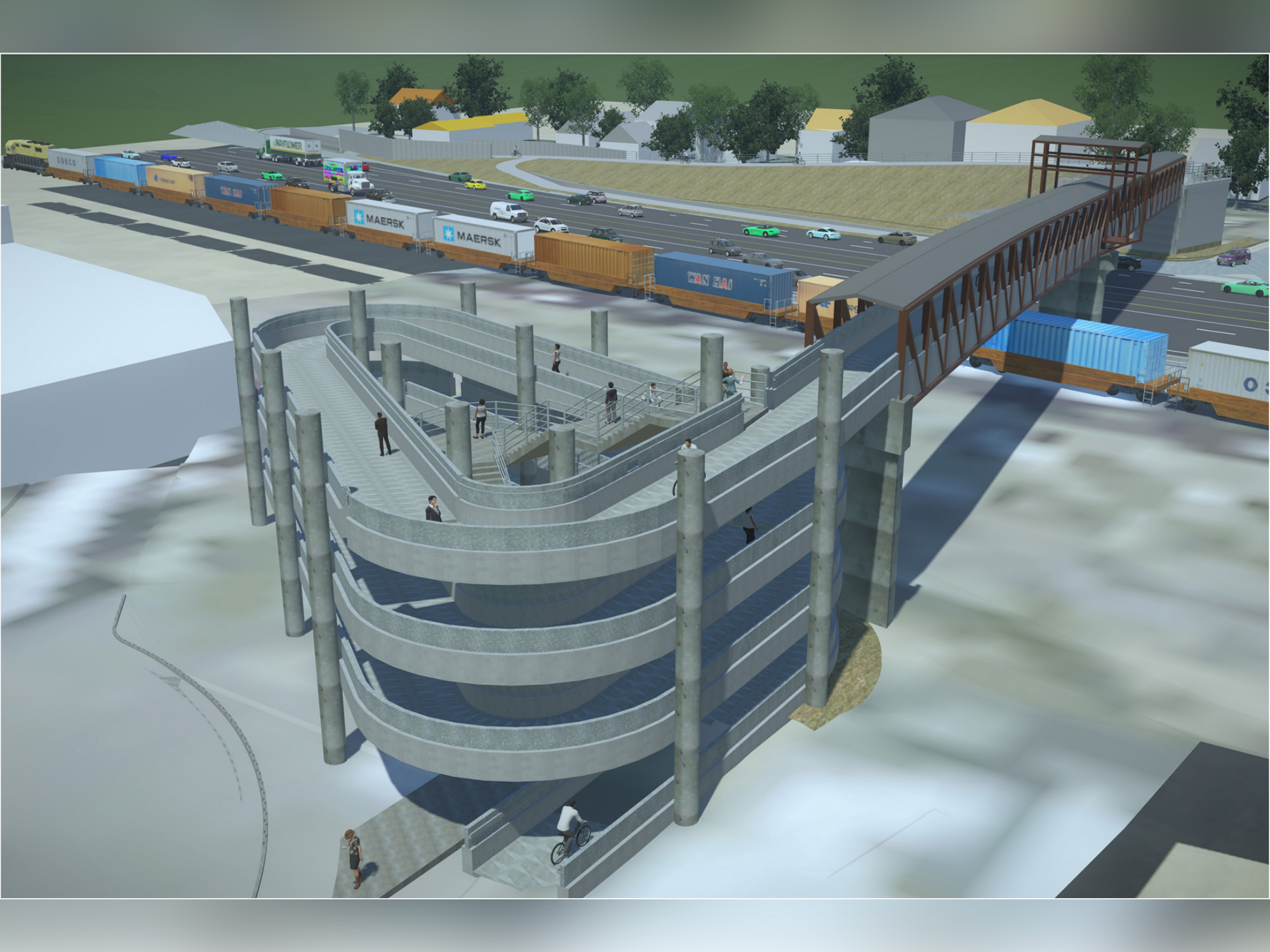

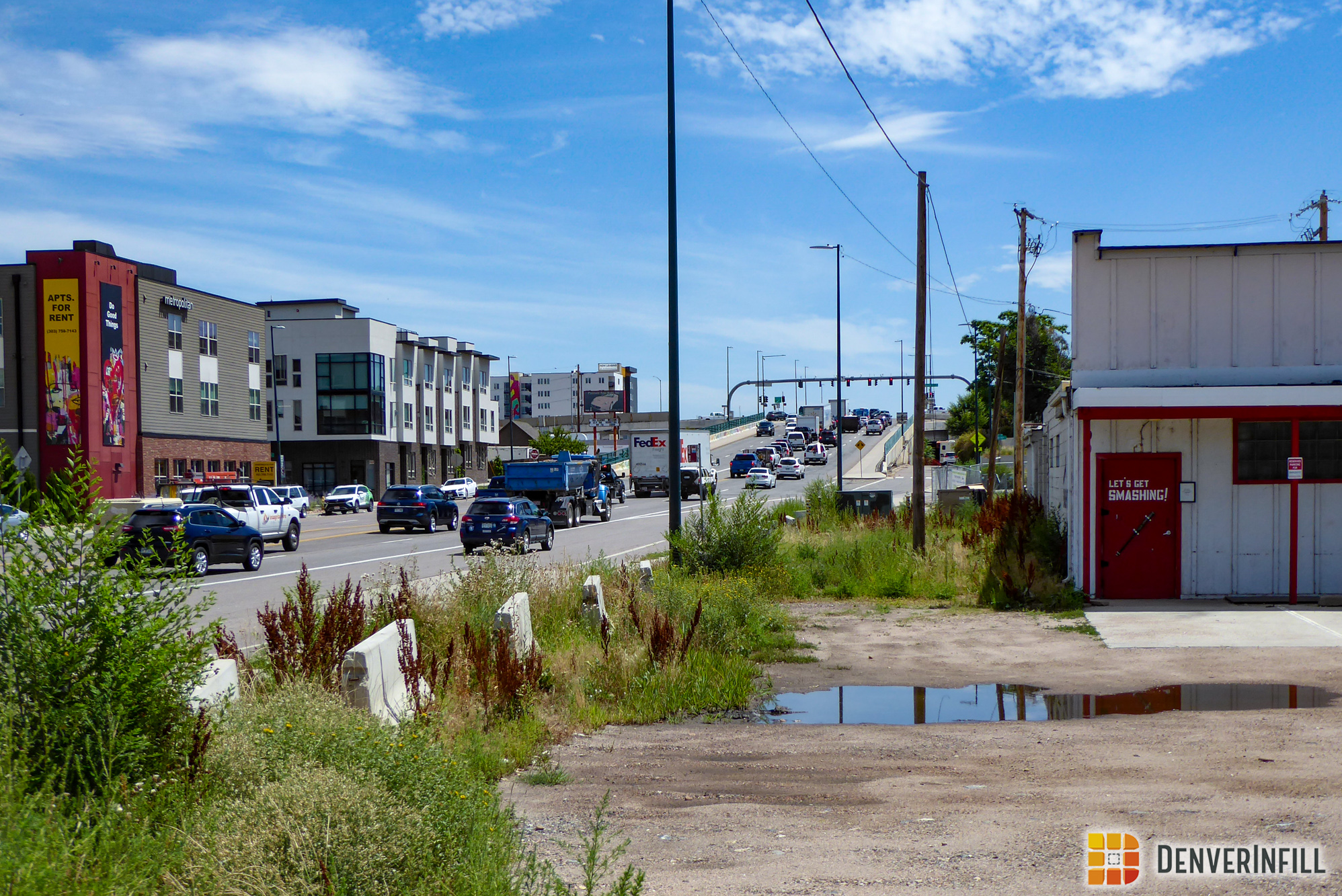
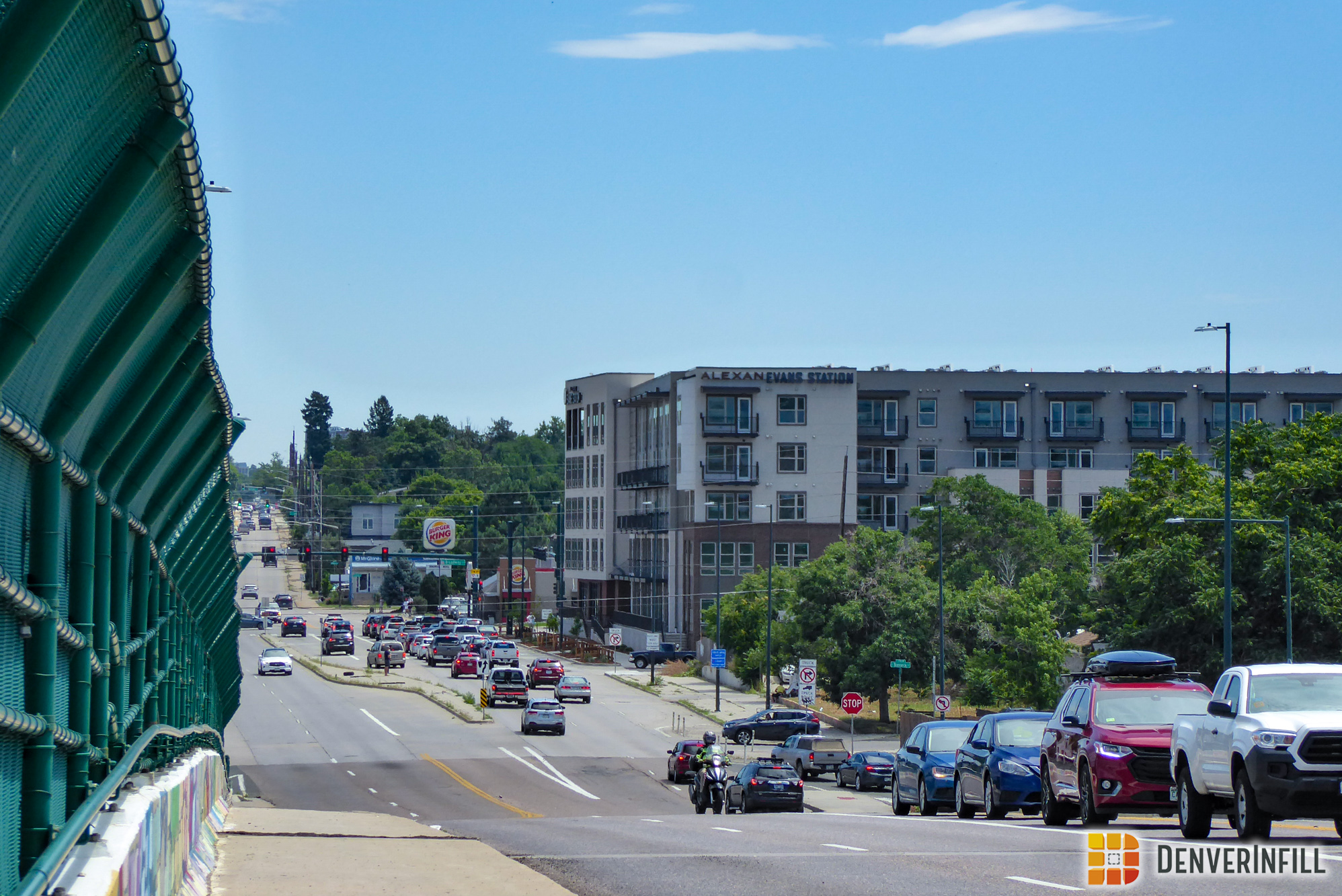

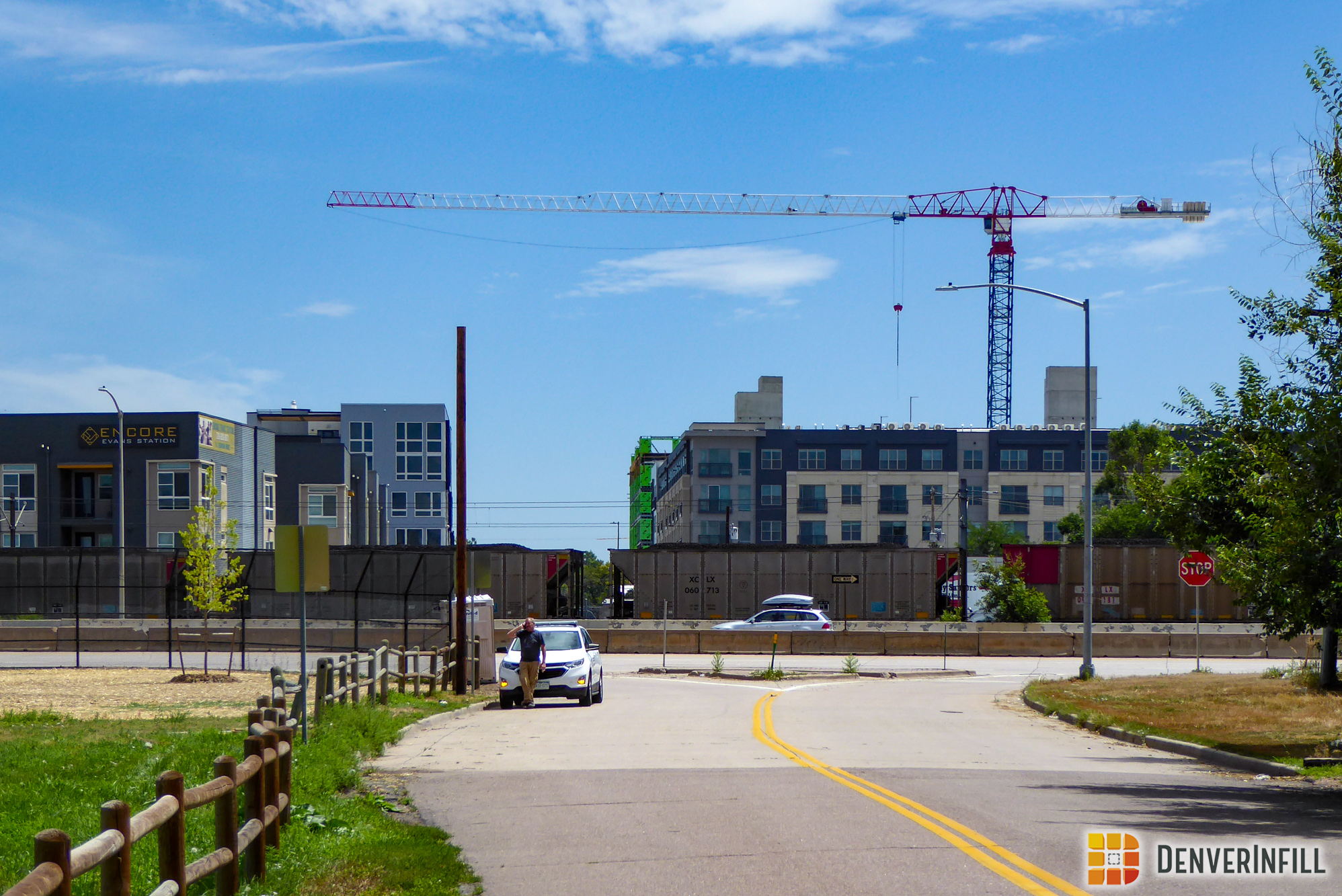
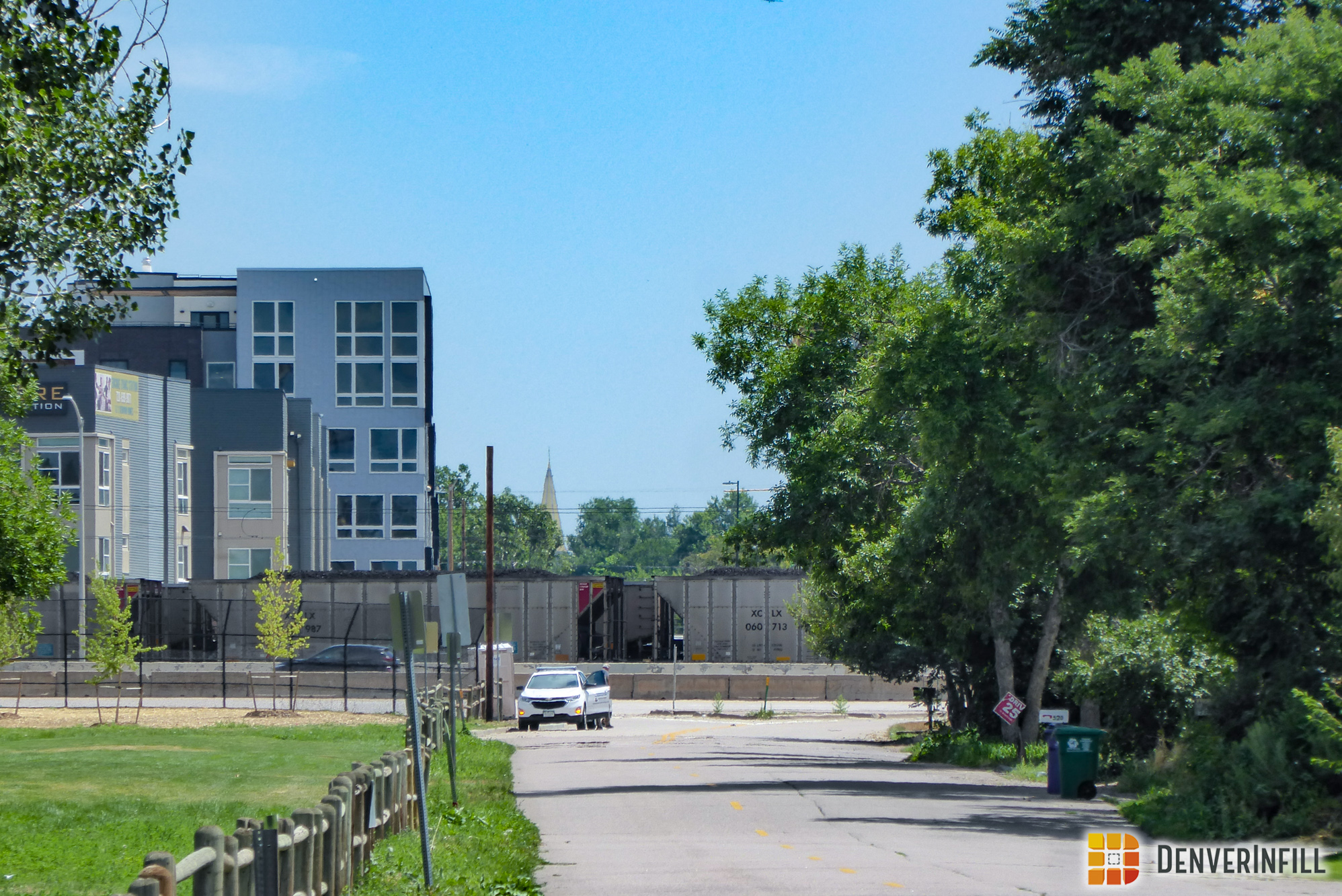

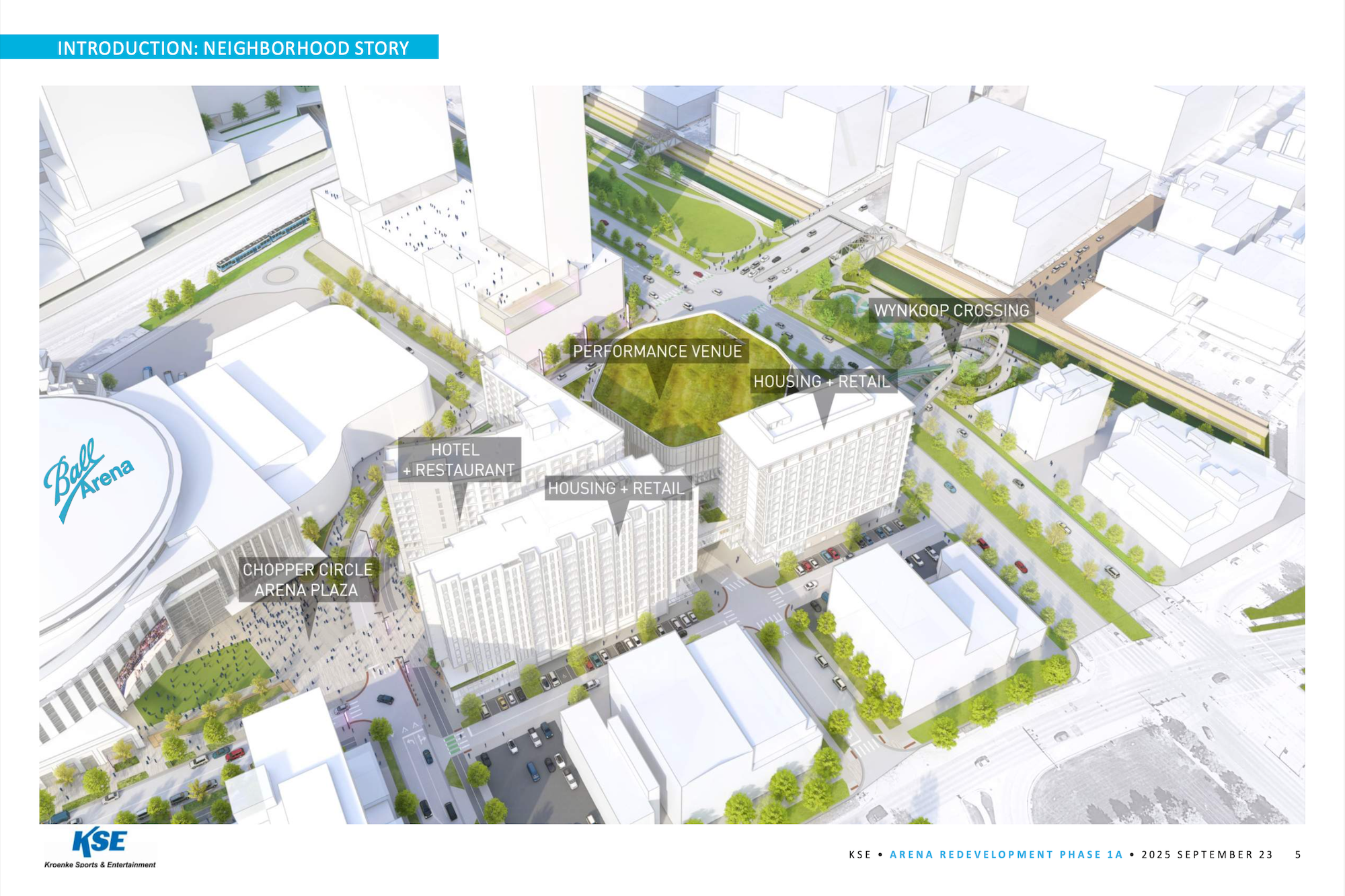
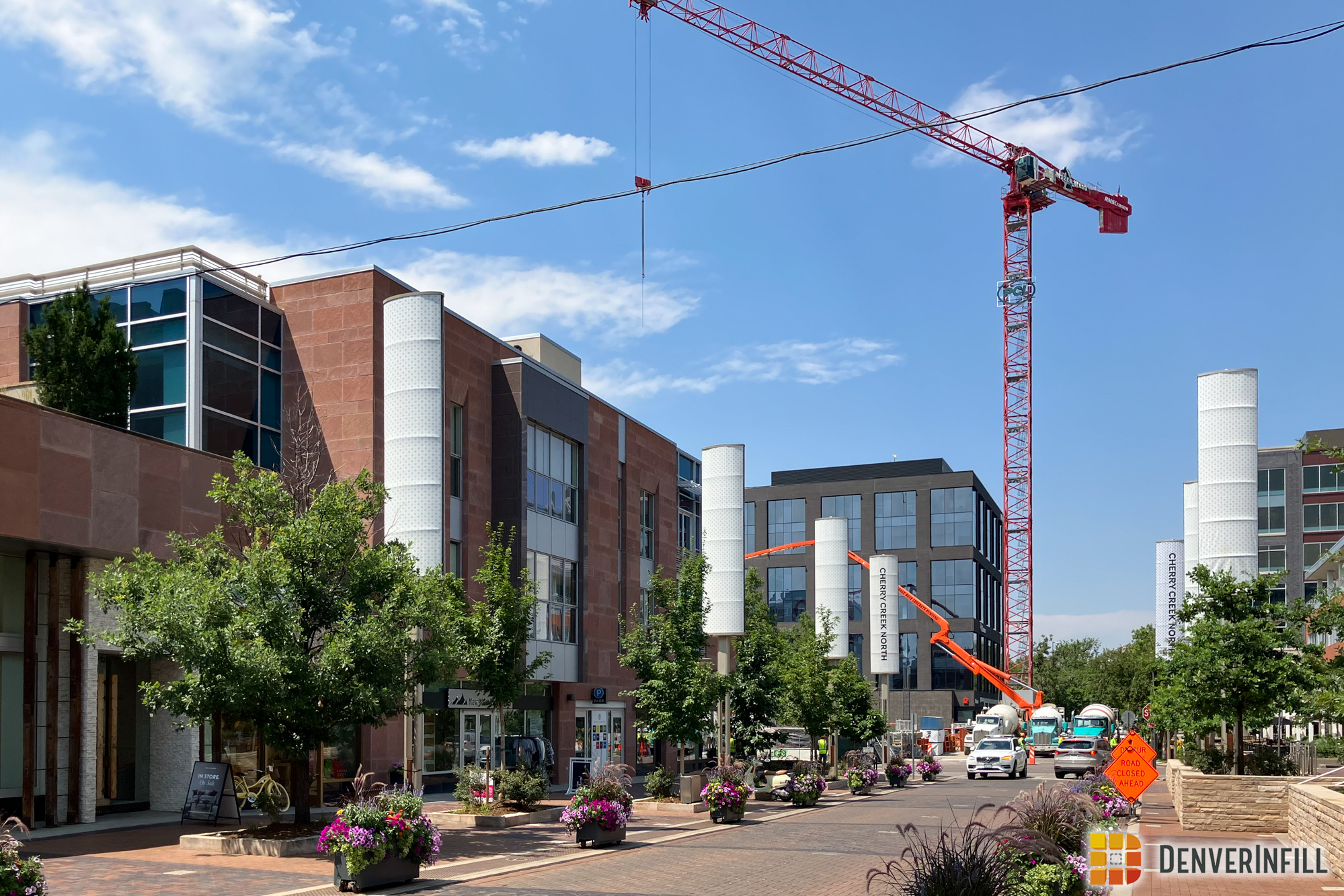
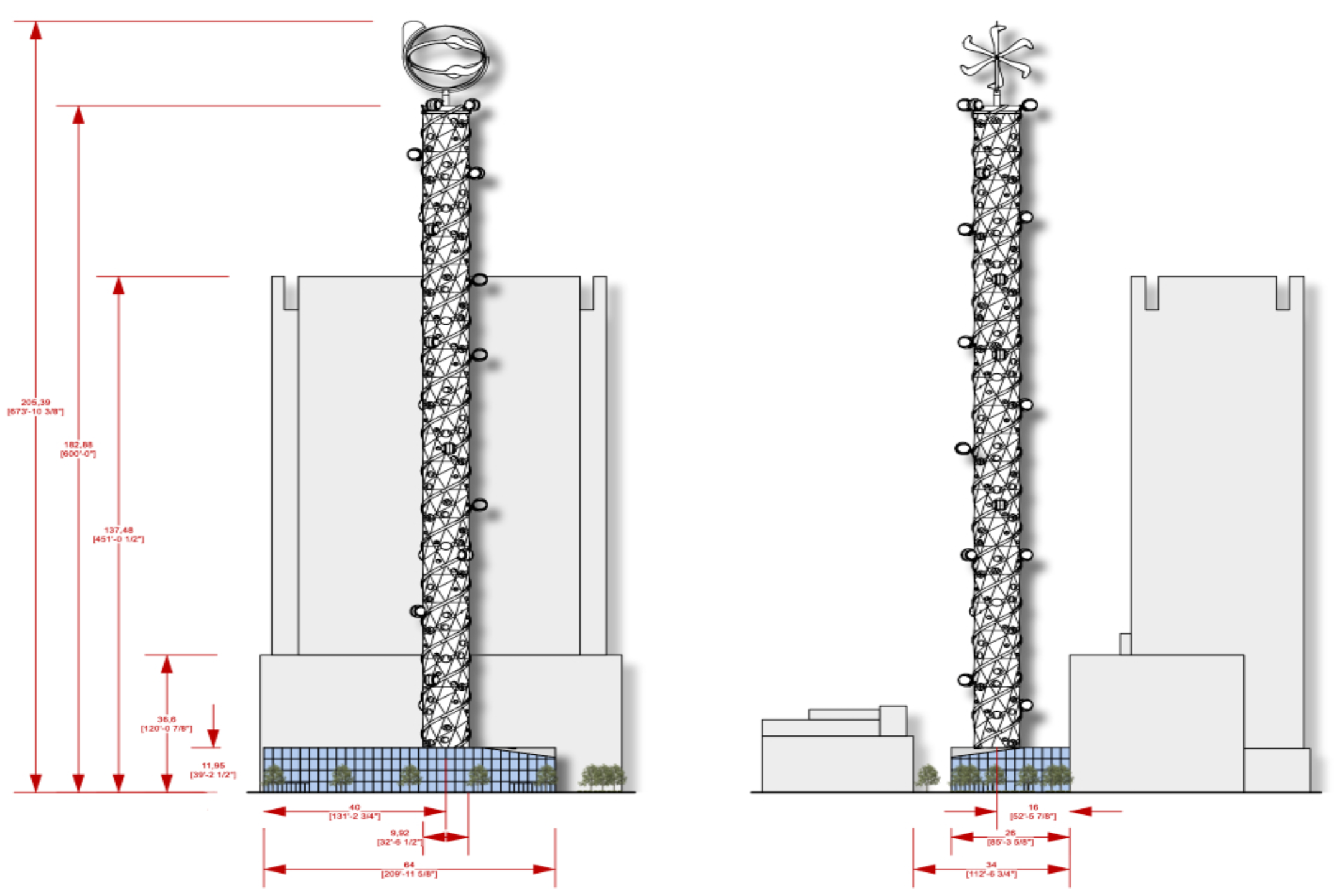




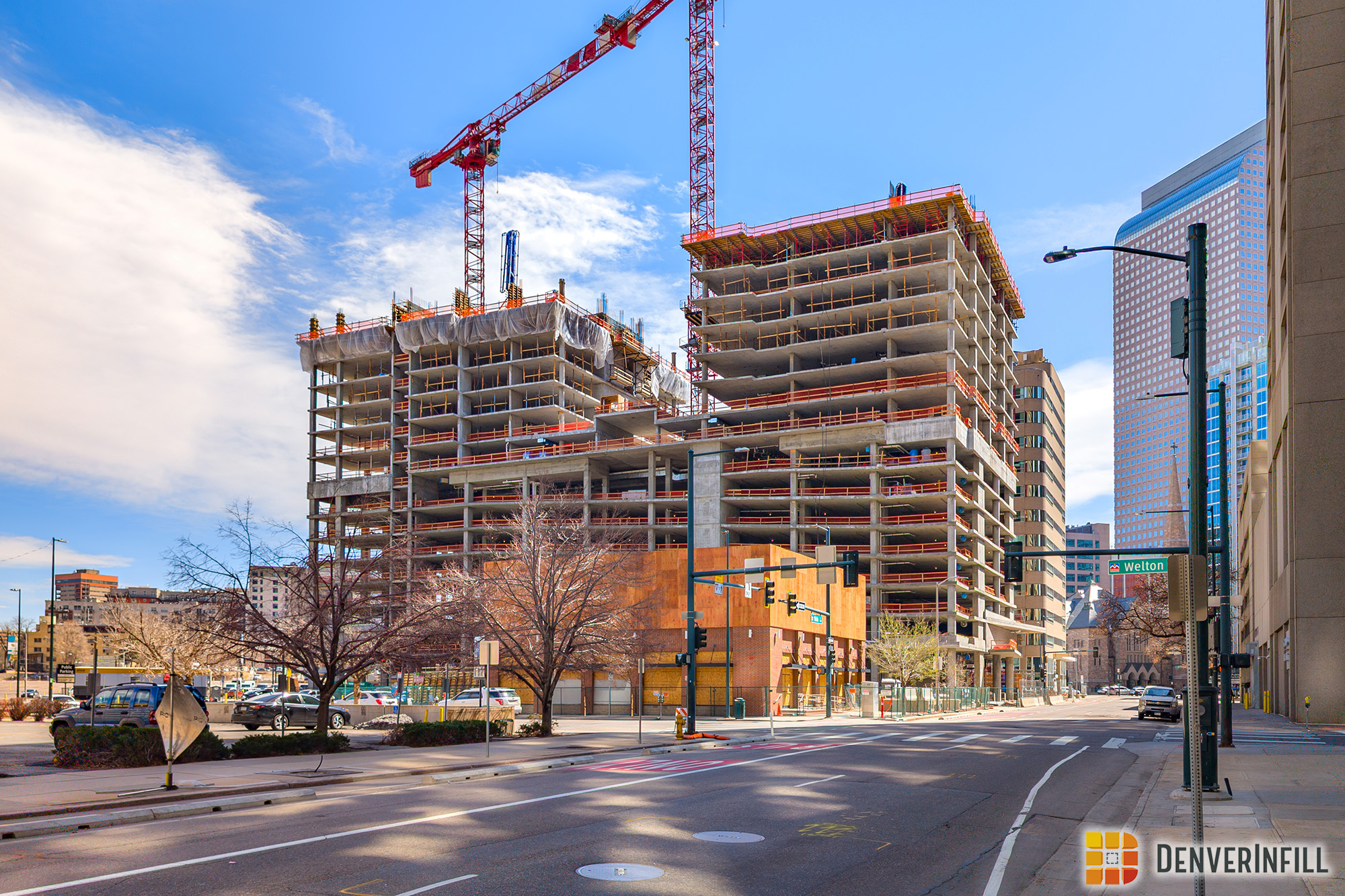

Clearly, the environment around the bridge landings on both sides, needs to be the ultimate focus of design effort. A bridgehead with restaurants and retail at each end would be a good call, with plenty of foot traffic and a place to walk to for coffee or a beer.
The two quadrant notches North and South of Evans and West of Broadway offer a tantalizing design opportunity for a few car-free streets where they are NOT in the commuter lanes. No one driving will notice, and everyone living there could enjoy them.
I live off Jewell in Harvey Park and have long wished for a safe way to bike to Evens Station. I was excited about the bridge until I realized it wouldn’t be connected to the Jewell bike lane. There needs to be another bridge over the Platte, connecting the Jewell bike lane to the Platte River Trail. Without that, this bridge only serves a tiny neighborhood while those living in Harvey Park, Mar Lee, and Ruby Hill are still cut off. It’s better than nothing though!
Made the mistake of taking the light rail from Union Station to a show at Levitt Pavilion this summer. That’s the kind of commute where the rail system should really excel. But boy was that nightmare “last mile.” Cyclists and pedestrians were clearly the last thing on anyone’s mind when designing nearly all the neighborhood infrastructure. Like the sidewalk just stopped at a bridge overpass.
Glad the city is identifying opportunities in the area to grow, but the whole area needs reimagining in a way that won’t be satisfied by a single bridge. As mentioned above, there’s got to be a *reason* to cross the bridge at all.
Will you be tracking or making updates to what’s going on with the Loretto Heights development plan?